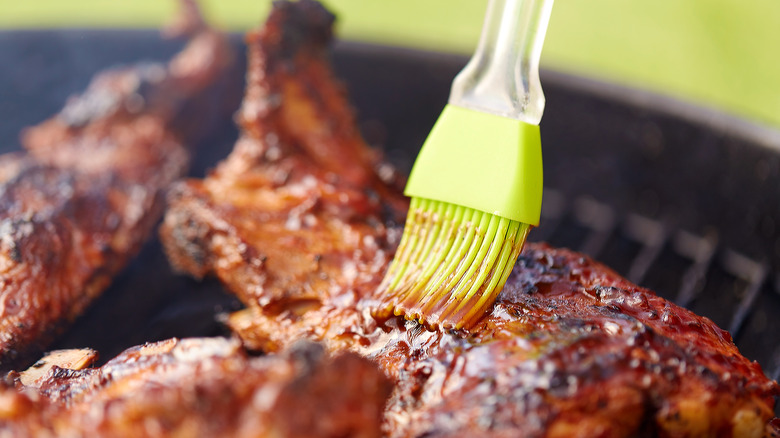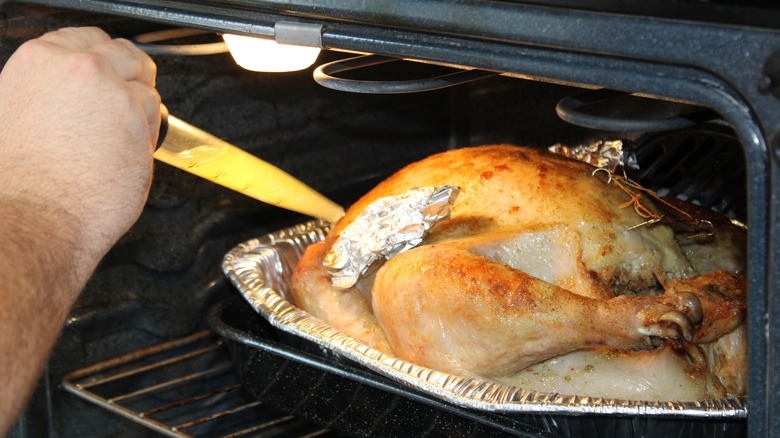Is A Bulb Better For Basting Than A Brush?
When roasting a piece of meat, the last thing you want is your protein to come out dry. Thankfully, basting is the perfect cooking technique to prevent that, whether you're using a basting bulb or brush. While many may only associate the term "basting" with a big roast turkey at Thanksgiving, the method goes beyond the bird and can be done to elevate so many other dishes, such as pretty much any type of beef, pork chops, scallops, and even vegetables. According to Bon Appétit, to baste is to use the fat rendered out from your meat while it cooks in the oven and pour it back onto the surface. Once you've smothered your protein with its own delicious fat, not only does this add flavor, but it helps the skin turn a beautiful golden brown.
While a spoon is always a handy option when it comes to basting, seeing that every kitchen should have one, tools like basting brushes and bulbs can help you get the job done a bit more efficiently.
Basting bulbs capture more liquid
If you've heard of a turkey baster, that is essentially another name for a basting bulb. It resembles a large eye dropper, and it sucks up the rendered fat and drippings in the pan for you to then pour back onto the meat. But is a basting brush just as efficient? The Spruce Eats states that there are advantages to both. While using a basting bulb can capture all of the juices from the pan due to its impressive suction abilities, it doesn't give good coverage when releasing the juices onto the meat. A brush has the opposite ability, in that it can't scoop up any juices but has the precision to achieve full coverage when it's time to coat the meat. If your basting liquid isn't thick enough to adhere to the brush, a basting bulb is the best option.
While a basting bulb captures more liquid, it's a bit harder to clean. A basting brush is typically easier to clean, and silicone options are often dishwasher-safe. According to Food & Nutrition, there are other uses besides basting for each of these tools. You can use a basting brush to grease a pan or baking dish and spread butter or oil on bread for toasting. A bulb baster can be used to make unique shapes for pancakes, infuse flavors into foods, and remove liquids from certain foods.

